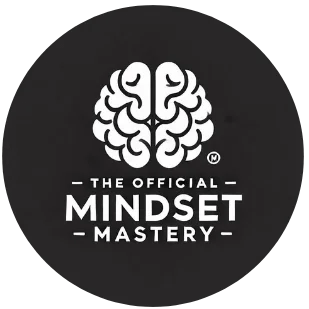Characters with believable motivations facilitate the suspension of disbelief for readers and cause them to be even more engaged in the narrative. Even the villains have justifiable lines of action that are sometimes discerned by readers, thus making the whole story more interesting out of the audience’s standpoint.
You should be aware of your character’s goals and how these relate to the central idea of your tale undoubted. When recognized, they need to be acquired and dealt with either outside or within the narrative, to achieve anything worth writing about.
Character Motivations
Readers in order to establish a true bond and attachment towards their favorite characters must understand what drives them. Often this knowledge is portrayed either by talking, thinking or some other images in between; its nuance makes the difference between an average story and a great one. What is it that actors always want to know about their characters’ motivation? It is of great significance in ensuring that three dimensional characters are realistic.
Motives are accomplished via goals, only that goals are a state that is reached whereas, motives are the reasons and forces behind the character’s actions and the actions have consequent bearing on the story. Motivations could be constructive, destructive, positive or negative, nurturing or harmful; Still motivation carries the characters on towards achieving their aspirations in spite of winters or away from horrors.
Such internal character’s motivation may come from any factor or collection of factors such as the past, influence others, and so on and what historical progression in a plot, with dependable facts and structural changes in future projects bearing time implications. For instance, Hamlet is seeking vengeance as he is morally and emotionally bound to women on account of the loss of a father, or as Smith in 1984 is both seeking freedom and doing things for the family protecting. Humanities create thumb screws making it difficult and going off the story for example joining the sandals – conflicts.
Polarization
Polarization is important in making the reader interested in the work and the actions of the characters court helps to provide that – explain the why and the how behind the acts and the decisions of the characters. Other drives may be new events that arise from the scene or some unexpected possible outcomes which may change even this character’s role and make him join the protagonist.
When trying to expose and understand what motivates the character you can start off with their wants – for example creative people may wish to gain the recognition they feel is due to them or there are others who want to be in love – and then you can think of the obstacles they face in articulating such desires (for instance, pov of a young kid: she has it in her to show it but is afraid of people complaining about it – vs character – vs self).
One more aspect of conflict relates to placing a character within the bounds of an opposing force or a society – such as Matilda’s classmates who bullied her, or maybe even bigger ones like an alien nation or a order, just like Frodo who, in the Lord of the Rings Trilogy, fights to get rid of Sauron’s Ring in order to protect Middle Earth – simply put.
The better the character, the greater his problems, which will be aimed at solving without asking for help from their armies of friends and family. This would make the intensity of their conflict more real whilst also increasing the importance of its resolution.
Theme
Another common process of developing fictitious characters is their backgrounds and personality types, along with their different quirks. Yet another aspect of character creation which is equally important in order to keep the audience’s attention: character’s motivation.
In case of characters lacking strong motivation it’s often enough to have a plot and some incidents in the character’s story with everyday life without much passionate chase to what the characters actually do or want through various events. On the other hand, if their characters are given strong motivations to move on into the plot of the story that needs to be told, the stories tend to be rather interesting dramas that has plots that takes readers’ attentions till the very end.
Inherent factors in a character’s motivation or extrinsically caused are two ways in which a character’s motivation can be illuminated. Intrinsic factors are those that come from the self which include one’s beliefs and values whereas extrinsic factors are those that come from outside relating to the needs and wants of other people.
For any theme that can offer a suitable resolution of the conflict to be realized, inner motives and conflicts, as well as external shifts in mind-set, factors and forces to fight for, have to co-exist to their fight.
Example: Any character who has an interest in the survival of both their family business and lasting relationships will most probably experience a conflict between these aims and her quest for more. This menace suggests separation and resolution of the two conflicts must occur in a way that is all enclosing to the overarching theme of the story.
Plot Development
Character motivation is among guidelines one needs to follow so as to come up with an effective plot development since it provides the reasons as to why characters do something. Because that’s what a writer does – brings focus, dimension, and clarity – through motivation – to what seems to be a muddle of storylines. Otherwise stories are likely to be fragmented or unnecessarily general – like in the case where a world war 2 high military decorated soldier kills a pastor and one has a number of reasons they could assign to such an action. What really is important in this case is how one explains the reasons behind that extreme step or action that the person undertook.
Comprehending the psychology behind a certain character is also important for helping the characters build relationships and for developing the central conflict. Among the most common character triangulations, the triangle of jealousy could be the most rewarding in terms of churning the story forward.
It’s evident that the surroundings also shift the goals of the characters. For example, being in an enclosed space and being nauseous would most likely make one behave quite differently than when they are seated comfortably on a chair. A plot can encourage the characters motivations by hiding certain objectives and dominating them in scenes where these objectives can be tested.
Plot progressions bring an element of order to the story and this order enables a reader finish a book. They may also involve adjusting a single action that changes the situation of the protagonist or changing the emotional and mental states of the characters that form the story.




